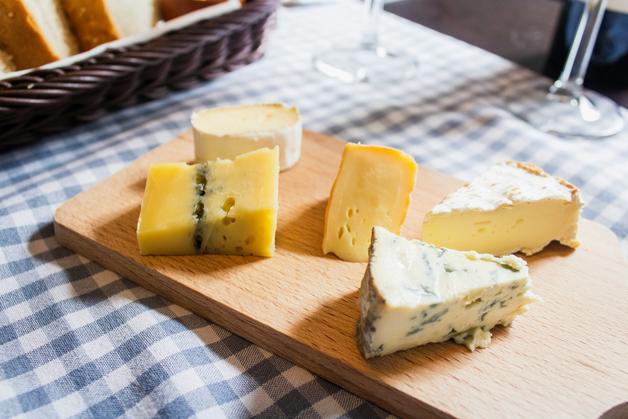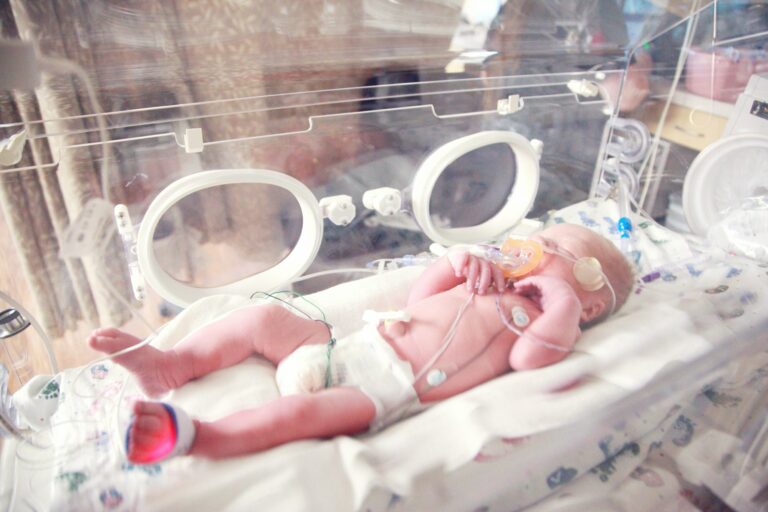You’ve wandered into the kitchen, a platter of cheese staring back, and the usual questions bubbling up. Which cheeses are truly safe during pregnancy? Is it possible to indulge cravings without putting your baby at risk? For many parents, the topic of cheese pregnancy brings both desire and hesitation—a tug-of-war between taste buds and safety. The fear of Listeria, E. coli, or Salmonella—those invisible pathogens that somehow loom larger during these nine months—hovers over even the most everyday foods. Yet, with shifting recommendations and evolving science, where does that leave everyday choices? Navigating labels, deciphering medical jargon, and balancing food safety with satisfaction: these are not trivial tasks. Good news: the landscape is more reassuring than it appears. You’ll discover evidence-based habits, straightforward answers, and even ways to transform constraints into opportunities for new culinary pleasures around cheese pregnancy.
Why Cheese Plays a Key Role During Pregnancy
Cheese, in the context of cheese pregnancy, is not just a snack—it’s a building block. Its concentrated blend of protein, calcium, vitamin B12, phosphorus, and zinc gives both mother and baby robust nutritional support. Consider this: calcium from cheese doesn’t simply lend its strength to tiny growing bones—it acts like a shield, lowering the risk of hypertensive issues like preeclampsia, a pregnancy complication where blood pressure escalates. Protein (casein and whey, to be precise) fuels fetal tissue development, especially crucial for the brain and nervous system, while B vitamins help prevent certain birth defects.
But there’s more: certain cheeses, particularly fermented cheese varieties, populate the maternal gut with beneficial bacteria. This isn’t just about digestion. Emerging research links healthy gut flora in pregnancy with stronger immunity and even improved mood via gut-brain communication. Still, moderation deserves mention. Cheeses, especially processed or harder varieties, bring along sodium and saturated fat—a duo best kept in balance to avoid issues like fluid retention or unhealthy weight gain during the journey of cheese pregnancy.
Identifying the Risks: Listeria and Cheese Pregnancy
Let’s pause on listeriosis—the concern that haunts the world of cheese pregnancy. Listeria monocytogenes, a hardy bacterium, possesses the unsettling skill of crossing the placenta, risking miscarriage, premature delivery, or neonatal infection. Though cases remain rare, medical vigilance is warranted; pregnant women are more susceptible due to changes in immunity.
Meanwhile, the spectre of Toxoplasma gondii infection rarely arises from cheese, but it lingers in public health recommendations. Add to that the possible presence of E. coli or Salmonella in raw milk products, and the story becomes layered. Not all cheese presents the same risk—the key variable is pasteurization and moisture content.
Adapting to Updated Guidelines—Not All Cheese Is Off-Limits
In recent years, the world of cheese pregnancy has shifted dramatically. In the past, blanket bans on cheese felt oppressive and unnecessary. Now, with modern dairy practices—pasteurization is the hero here—many cheeses enter the “safe” zone. The secret? Scrutinise every label for the magic word: pasteurized.
- Hard cheeses (rich in calcium and low in moisture) often resist bacteria naturally—even if made with unpasteurized milk. That long aging process and reduced water content mean Listeria finds little room to manoeuvre.
- Pasteurized soft cheeses: When treated properly, cheeses like paneer, mozzarella, ricotta, and even processed slices become allies rather than foes. It’s the unpasteurized versions, especially moist and soft-rinded types left unheated, that trigger medical red flags.
As you weigh options in the supermarket, moving past fear towards empowerment becomes not only possible, but almost routine.
Which Cheeses Are Safe? Which Should Be Avoided?
Every parent engaged in cheese pregnancy faces this crossroads eventually—the cheese counter. Here’s how to decode the safe bets from the risky ones:
Cheeses to Say Yes To
- Hard cheeses (Cheddar, Parmesan, Gruyère, Emmental, Swiss, Gouda): Their low water content is inhospitable for bacteria, so they’re considered low risk, even when made with raw milk. Texture lovers rejoice! Whether grated on pasta or cubed for snacking, these suit nearly any craving.
- Pasteurized soft cheeses (paneer, processed cheese spreads, cottage cheese, cream cheese, pasteurized feta and ricotta): The labeling is your true north here; avoid those sliced at the counter, as cross-contamination remains a lurking variable.
- Cooked cheese dishes: Heating cheese to a bubbling-hot state (minimum 75°C/165°F)—think pizza, fondue, lasagne, cheese-stuffed parathas—transforms even soft or blue cheeses into safe territory.
Cheeses to Avoid or Approach with Caution
- Unpasteurized soft cheeses: Brie, Camembert, blue-veined cheeses (Roquefort, Gorgonzola), Saint-Marcellin—particularly hazardous when their rinds are moist and velvety. Unless cooked thoroughly, keep away.
- Loose or counter-sliced soft cheeses: Less control over hygiene and storage equals higher risk.
- Certain Hispanic cheeses (queso fresco, cotija, panela): Often produced in traditional ways that sidestep safe pasteurization techniques, even when labeled pasteurized.
- Rinds: The outer layer of soft or “washed-rind” cheeses harbors more bacteria than the inner part. Always cut away and discard, regardless of the cheese’s pasteurization status.
Goat and Sheep Cheese—What To Watch
A delight for many, goat’s and sheep’s cheese varieties can find a place in cheese pregnancy if (and only if) they’re pasteurized or thoroughly cooked. The telltale “white rind” or “bloomy appearance” signals a risky surface—avoid unless exposed to sufficient heat.
Pre-Grated, Spread, and Processed Cheese
Pre-grated or spreadable cheeses mostly come from pasteurized milk. But as packaging opens, so does the risk of contamination—use within a few days, keep tightly sealed, and, for absolute control, grate your own from a block at home.
The Power of Cooking in Cheese Pregnancy Safety
Science is clear on this: Listeria’s nemesis is heat. Melt cheese into bubbling submission or grill until it oozes, and you neutralise dangerous bacteria. That tricky Camembert lurking in the fridge? Once baked on a pizza or under a crust, it’s transformed from risk to reward. Always ensure the dish is piping hot throughout—cold spots are an invitation for germs to linger.
Daily Hygiene and Storage: Small Habits, Big Difference
Sometimes, it’s the routine steps—often overshadowed by big questions—that shape safe cheese pregnancy choices:
- Examine every label. “Pasteurized milk” should be clear and unambiguous.
- Store at the right temperature (2–4°C). Airtight packaging prevents unwanted cross-contamination with raw foods, especially uncooked meat or fish.
- Maintain spotless hands, knives, and cutting boards before and after cheese handling.
- Once opened, finish cheese quickly; avoid letting slices or grated cheese dry out. Any unfamiliar odour, fuzz, or slimy sheen? Discard without a second thought.
- The rind dilemma: Always trim and remove, no matter how tempting that textured crust seems.
Creative Alternatives When Cheese Feels Limiting
Cheese cravings during pregnancy can feel intense, almost unruly. When conventional choices hit a dead end, plant-based innovations step up. Modern vegan cheeses—crafted from cashew, almond, soy—often come fortified with calcium, vitamin D, and B12. Industrial production and clear labeling (look for “pasteurized”) should guide every plant-based purchase.
Need variety or extra nutrition? Fortified plant milks, probiotic yogurts, almond or oat beverages bring protein and minerals to the table. Try tossing pasteurized mozzarella in a summer salad, whisking cottage cheese into dosa filling, or layering processed cheese in a warm sandwich for a satisfying crunch.
Balancing Nutrition and Cheese Cravings
Cheese pregnancy is about more than avoiding risks. Cheese, in moderation, bolsters bone health, muscle growth, and cognitive function, thanks to its unique profile of casein proteins, zinc, and probiotics. But portion sizes matter—generally 40g per serving, three times per day, though dietary needs can vary. For those reducing dairy intake, combine leafy greens, legumes, and nuts or pick fortified plant alternatives to preserve calcium and protein intake.
Managing cravings? Select pasteurized, hard, or well-cooked cheeses. Rotate with plant-based substitutes (especially those enriched with vitamin B12) and vary the textures—sometimes crunch, sometimes creaminess—to keep taste buds interested and safe.
Eating Cheese Out or While Travelling
Dining out or grabbing a snack on the go doesn’t have to be fraught with worry. Ask explicit questions about cheese origins and pasteurization. Lean towards hard cheeses or cheese that’s visibly steaming in cooked dishes. Bypass street vendors where labeling and hygiene remain uncertain. For picnics or journeys, insulated bags extend the safe window for perishable cheese.
Accidentally Ate Unsafe Cheese? What Now?
Unintentional slip-ups in cheese choices are stressful, especially during cheese pregnancy, but panic rarely solves much. Watch for signs like fever, muscle ache, digestive discomfort, chills. If symptoms (even subtle ones) crop up, a prompt call or visit to your healthcare provider is wise. Swift intervention is highly effective in preventing complications.
When to Seek Professional Guidance
If cheese safety remains uncertain, symptoms appear post-meal, or dietary doubts linger, don’t hesitate to tap into expertise—doctors, midwives, and dietitians all offer tailored recommendations, helping keep both taste and health priorities in view.
Key Takeaways
- In the adventure known as cheese pregnancy, industrial hard cheeses, those clearly marked as pasteurized, and hot, cooked cheese dishes hold top spots for safety.
- Softer, blue-veined, or unpasteurized cheeses—especially those sold loose—are significantly higher risk for Listeria.
- Unearth “pasteurized milk” on every label before adding cheese to your plate.
- Rind removal from soft cheeses, limited storage after opening, and thorough cooking safeguard your peace of mind.
- Cooking cheese not only improves taste but also eliminates harmful microbes, making certain “off-limits” types safe in hot recipes.
- Plant-based and vegan cheese alternatives—industrial, fortified, and pasteurized—provide creative support on your cheese pregnancy journey.
- The wisdom and reassurance of healthcare professionals can anchor your decisions at every turn.
- For truly personalized guidance and quick access to paediatric health resources, consider downloading the application Heloa, offering expert advice and free health questionnaires for your child’s care.
With the right information, safety becomes second nature, and that much-loved cheese platter need not gather dust.
Questions Parents Ask
Is it safe to eat paneer or Indian cheese during pregnancy?
Yes—paneer, along with soft pasteurized cheeses such as mozzarella, feta, cream cheese, or ricotta, are counted as safe for expecting parents, provided they’re made from pasteurized milk. Paneer delivers reliable protein and calcium, supporting both your body and the baby’s growth. Look out for unpasteurized options or artisanal cheese, which may carry unwanted bacteria like Listeria. In case of doubt, label verification or asking at restaurants puts worries to rest.
What types of processed cheese are safe during pregnancy?
Widespread processed cheese spreads and slices (like Amul cheese and other popular packaged varieties) are safe choices in cheese pregnancy provided they’re clearly made from pasteurized milk. These are often factory-sealed, supporting hygiene and shelf life. Prioritize unopened packs with proper labeling and always combine with an overall balanced meal.
Should I avoid all types of soft cheese while pregnant?
Soft cheese does not have to disappear from your kitchen. Stick to pasteurized versions, store them well, and enjoy without anxiety. If you find unpasteurized varieties, they can be safely consumed when thoroughly cooked and steaming hot. Still feeling unsure? Consulting a healthcare professional ensures reliable reassurance tailored to your situation.
Further reading:









